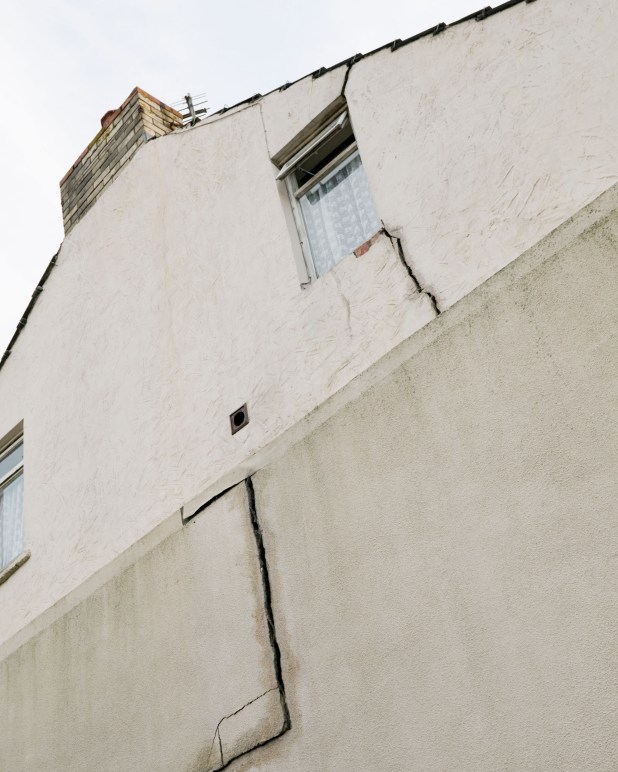Ground subsidence, the gradual sinking or shifting of soil beneath structures, poses a serious risk to infrastructure, particularly in residential and recreational areas. Whether caused by human activities such as mining and heavy construction or by natural erosion over time, subsidence can compromise the structural integrity of homes, pools, and other built environments.
At Ostanes Engineering, we specialize in subsidence prevention and remediation, ensuring that properties remain stable and structurally sound. Understanding the causes and early warning signs of subsidence is essential for homeowners and property managers looking to protect their investments.

Key Causes of Ground Subsidence
While some degree of natural subsidence is inevitable, Ostanes Engineering has identified several high-risk activities that accelerate soil instability:
- Mining Activities: Underground mining and the use of high explosives can lead to mine subsidence damage, often affecting areas miles away from the excavation site.
- Heavy Construction: Large-scale construction projects can displace soil and lead to subsidence damage, particularly in areas close to residential properties.
- Tree Root Intrusion: Large tree roots can destabilize the soil, leading to shifts in the foundation of homes and recreational spaces.
- Water Erosion from Plumbing Leaks: Small, undetected leaks in residential plumbing systems can saturate the soil, reducing its ability to support structures and leading to settlement over time.
At Ostanes Engineering, our team of experts conducts detailed subsidence risk assessments to identify vulnerabilities and recommend effective mitigation strategies.
How to Minimize the Risk of Subsidence
To prevent ground subsidence from causing structural damage, Ostanes Engineering recommends the following proactive measures:
- Ensure Proper Driveway Leveling
Driveways with uneven surfaces create water pooling, increasing the risk of soil displacement. A properly graded driveway prevents moisture buildup, reducing the likelihood of subsidence. - Regular Plumbing Inspections
Undetected leaks can lead to gradual soil erosion. Homeowners should routinely inspect their plumbing systems to prevent water from weakening their property’s foundation. - Evaluate Home Location Before Purchase
If purchasing a new home, verify its proximity to mining zones. Homes situated near active mining sites are at higher risk of mining subsidence damage. - Manage Vegetation Around the Property
Large trees with invasive root systems can alter the soil composition. Ostanes Engineering recommends professional tree removal for those growing too close to foundations, driveways, or recreational structures. - Monitor Recreational Areas for Early Signs of Subsidence
Subsidence can occur in unexpected locations such as swimming pools, tennis courts, and older aged-care homes. Routine inspections can detect minor shifts before they escalate into severe damage.
Identifying Subsidence in Pools, Tennis Courts, and Aged Care Homes
Recognizing early subsidence signs is crucial for timely intervention. Ostanes Engineering provides professional assessments to detect and mitigate subsidence-related risks.
Swimming Pools
Key indicators of subsidence around swimming pools include:
- Uneven pool decking
- Cracks in surrounding concrete or stonework
- Structural cracks in the pool floor or walls
- Sunken or raised concrete areas around the pool
Tennis Courts
Since most tennis courts are built on concrete foundations, subsidence may be difficult to spot. Ostanes Engineering suggests watching for:
- Sinking areas, particularly in the corners of the court
- Uneven net alignment due to shifting ground
- Visible cracks or warping of the playing surface
Aged Care Homes
Older buildings are particularly vulnerable to subsidence due to their aging foundations. Warning signs include:
- Uneven flooring and concrete surfaces near drainage systems
- Mold growth on walls, suggesting hidden plumbing leaks
- Bowing plasterboard and cracked tiles in bathrooms
- Windows and doors failing to close properly due to shifting foundations
If any of these issues are detected, it is critical to contact Ostanes Engineering for a professional assessment and repair plan.
The Role of Resin Injections in Subsidence Prevention
One of the most effective methods for preventing further subsidence damage is polyurethane resin injection. This technique involves injecting expanding resin beneath a subsiding structure, compressing and strengthening the soil to restore stability.
At Ostanes Engineering, we use advanced resin injection technology to reinforce foundations and halt soil displacement, offering long-term protection against subsidence.
Conclusion
If you notice cracks forming in walls, uneven flooring, or driveway displacement, you may be facing a subsidence issue. Early intervention is key to preventing structural damage and costly repairs. Ostanes Engineering provides expert subsidence detection and remediation services tailored to residential and commercial properties.
Contact Ostanes Engineering today for a professional consultation and protect your home from the risks of ground subsidence.
FAQs on Subsidence Prevention
What are the early warning signs of subsidence?
Subsidence often presents itself through sinking concrete floors, cracked walls, and misaligned doors or windows. Regular inspections can help detect these issues early.
What steps can homeowners take to prevent subsidence?
- Trim large trees to prevent excessive root intrusion
- Maintain proper drainage systems away from the house foundation
- Conduct periodic visual inspections for cracks in brick or concrete surfaces
For comprehensive subsidence prevention solutions, Ostanes Engineering offers expert consultation and risk assessments. Get in touch with us today!







